Columbus may be interred in Seville…or not.
Catedral de Santa María de la Sede (Seville Cathedral)
The first candidate for Columbus’ final resting place is the Seville Cathedral.
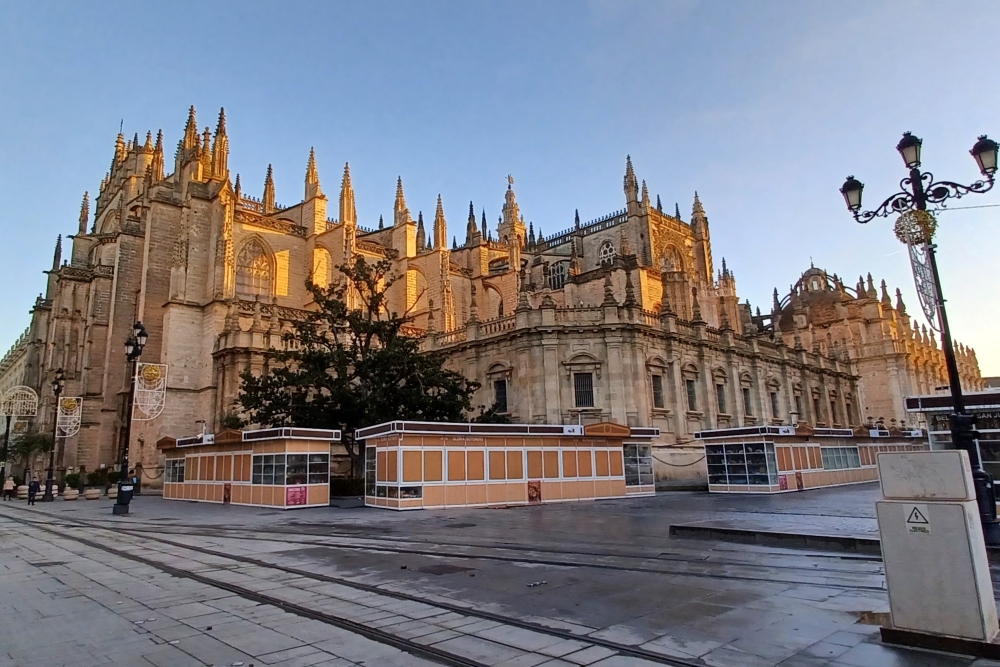
Like many churches in Spain, the Seville Cathedral was originally a mosque, built 750 years ago during the Almohad Caliphate. After the Reconquista, the mosque was converted to a church.
Reconstruction, rehabilitation, and expansions continued for several centuries including a major rebuilt when the dome collapsed in 1888 due to an earthquake. However, the Gothic façade remains the most recognizable element of the cathedral.
After initial construction in the early 16th century, the Seville Cathedral was the largest church in the world. It remains the world’s largest Gothic church and the 4th largest church in the world.
Inside the cathedral are 80 chapels, each ornately decorated. I was blown away by the amount of intricate woodwork and artwork in the cathedral. One of the most magnificent is Pierre Dancart’s masterpiece, a massive carved alter.
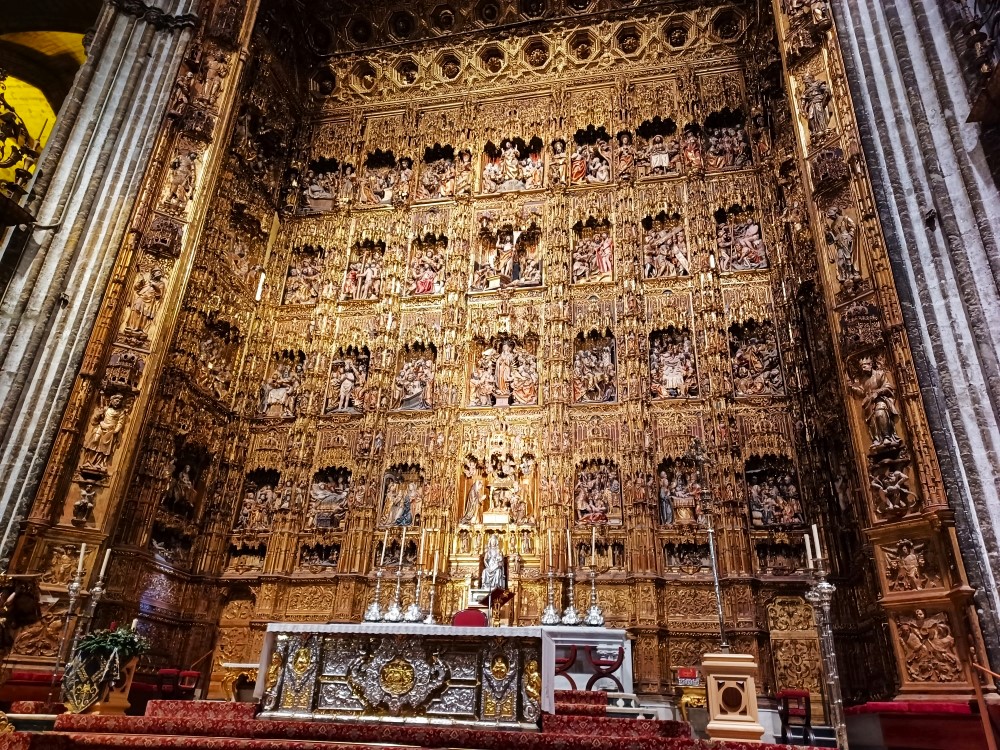
The bell tower (La Giralda) is almost 350 tall and is said to have originally been a minaret for the mosque. Climbing to the top by ramps rather than stairs (there are a few stairs at the end) gives way to unforgettable views of the city. Not to be missed.
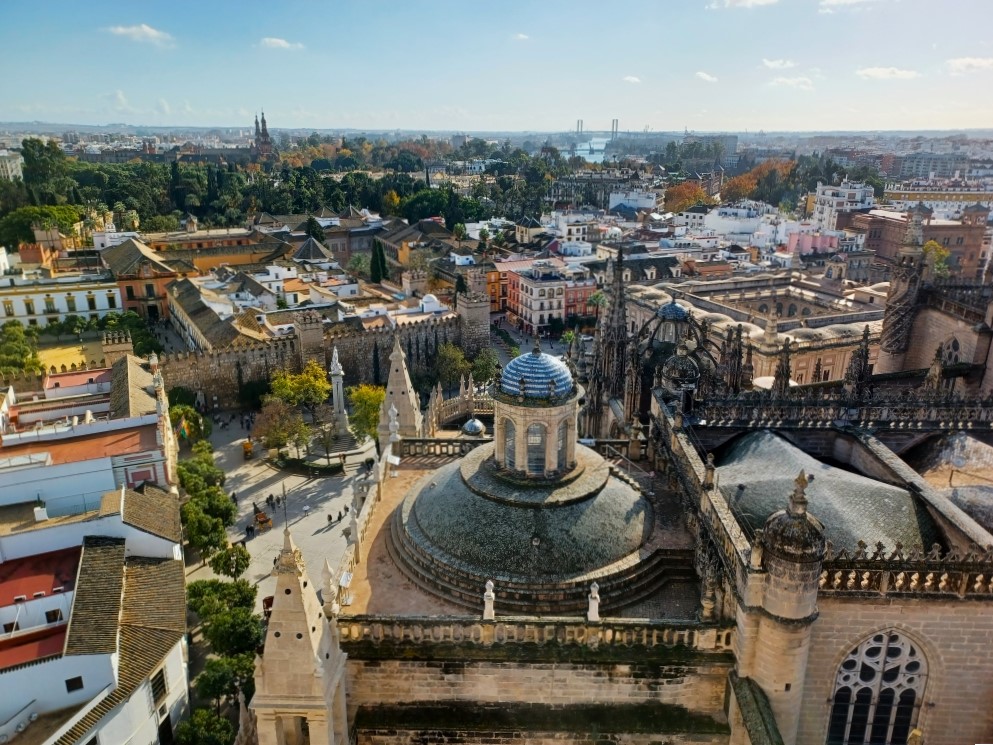
Remains of Christopher Columbus
Explorer, slave trader, and perpetuator of genocide, Christopher Columbus died in Valladolid, Spain in 1506. He was initially buried at the Chapel of Wonders in the Convent of St. Francis, Valladolid, but Columbus was almost as well traveled in death as he was when alive.
In 1513, Columbus was exhumed by order of his son Diego and his remains were moved to the Seville Cathedral. Then, in 1536, Columbus and the body of his son were again moved, this time across the ocean to the Dominican Republic. Later, they were interred in Havana, Cuba. It was only in 1898, after the Spanish-American War, that Columbus’ corpse was moved back to the Seville Cathedral.
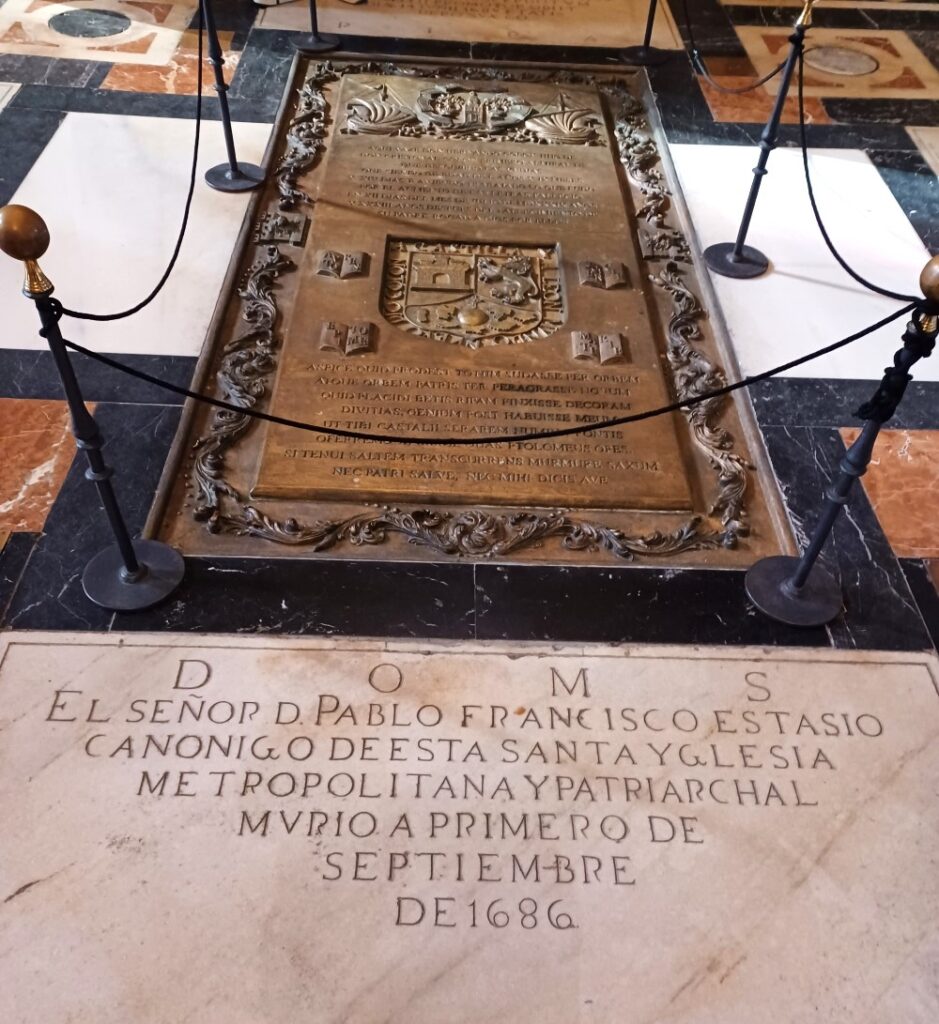
In 2003, following questions surrounding the authenticity of the the bones in the box, DNA samples were tested. Initially, there was some debate as to whether the body was actually that of Columbus. But, final DNA and historic analysis have led researchers to conclude that Columbus’ carcass is in the casket in the Seville Cathedral.
Columbus Lighthouse, Santo Domingo, DR
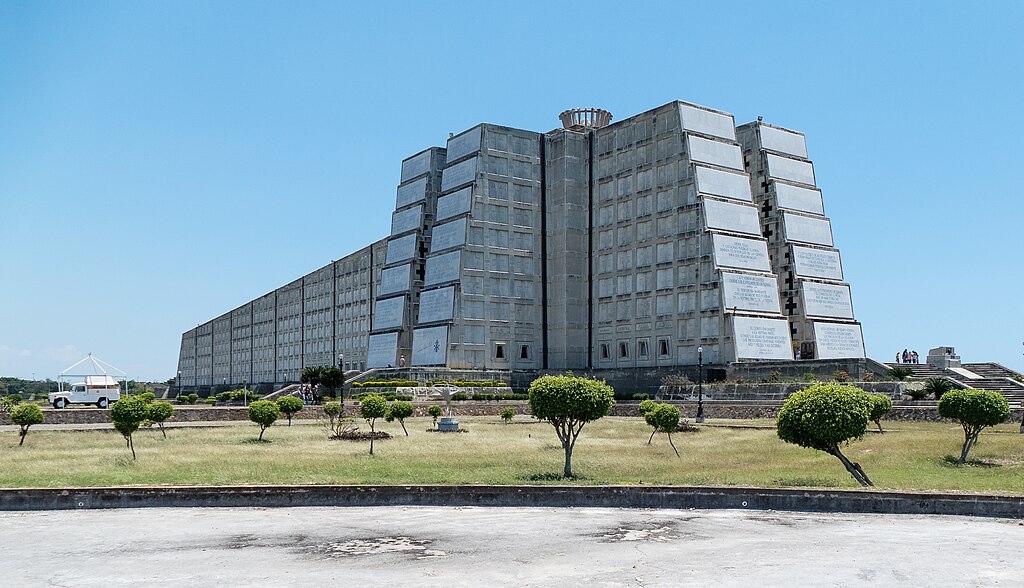
The debate doesn’t end there, however. In 1877, a worker in Santo Domingo, Dominican Republic found a lead casket with an inscription saying “The illustrious and excellent man, Don Colon, Admiral of the Ocean Sea.” This led them to believe the explorer’s remains were inside. However, Columbus’ son was also known as Don Colon and no DNA analysis was conducted to determine whose corpse it is. Still, that hasn’t prevented Santo Domingo from constructing a giant building called the Columbus Lighthouse to house what may or may not be his remains.
About the Author

Brent Petersen is the Editor-in-Chief of Destination Eat Drink. He currently resides in Setubal, Portugal. Brent has written the novel Truffle Hunt (Eckhartz Press) and the short story collection That Bird. He’s also written dozens of foodie travel guides to cities around the world on Destination Eat Drink, including an in-depth eating and drinking guide to Portugal. Brent’s podcast, also called Destination Eat Drink, is available on all major podcasting platforms.
